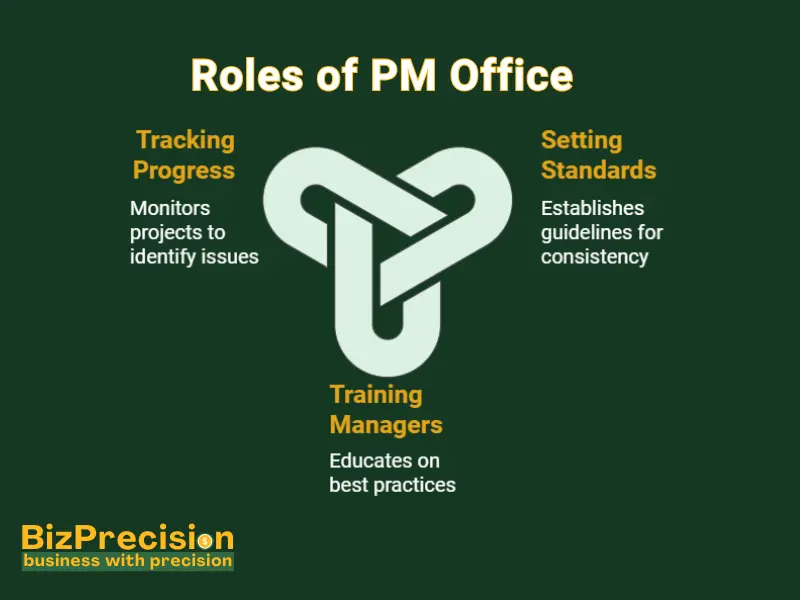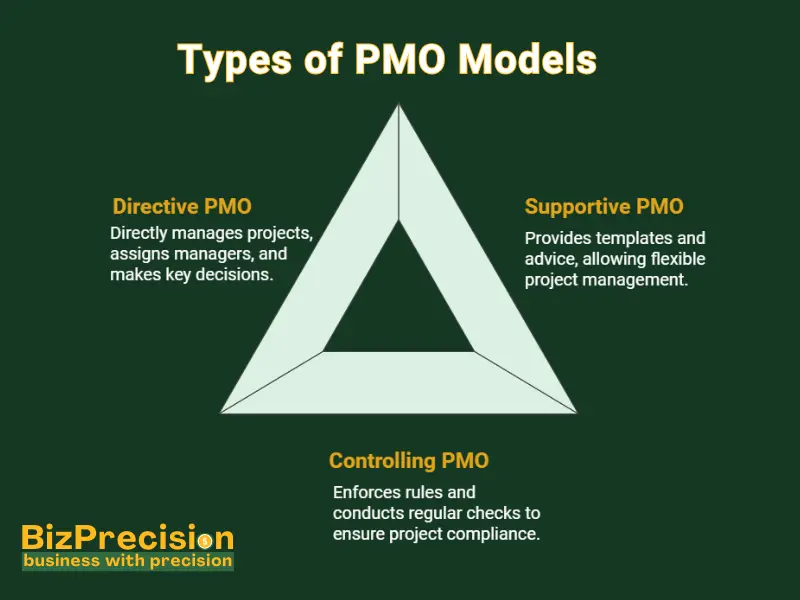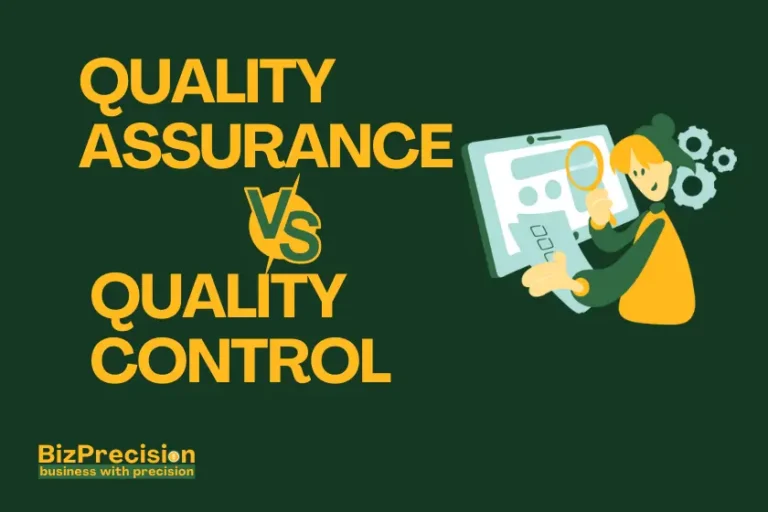What is a Project Management Office (PMO)?
A Project Management Office (PMO) is a department that sets project management standards and improves project success within an organization.
This central hub helps teams work better together and deliver projects on time and within budget.
According to the Project Management Institute‘s 2023 Pulse of the Profession report, organizations with a PMO see 27% fewer project failures and save an average of $175,000 per project. These numbers show just how much a PMO can help businesses succeed.
A strong PMO helps in three key ways. First, it creates clear rules and methods for running projects. Second, it makes sure teams use resources wisely. Third, it helps leaders make smart choices about which projects to take on. This guide will walk you through everything you need to know about PMOs.
Role of Project Management Office
A PMO is a team that helps organizations run projects better. Think of it as the control tower at an airport, making sure all flights (projects) run smoothly and safely. According to research by Gartner, companies with PMOs complete 38% more projects on time and within budget.

Key roles of a PMO include:
- Setting project standards and rules: These guidelines help teams work the same way across the organization. This means better teamwork and fewer mistakes.
- Training project managers: PMOs teach best practices and make sure everyone knows how to run projects well. This leads to more successful projects.
- Tracking project progress: By watching how projects are doing, PMOs can spot problems early and fix them before they get big.
Core Functions and Responsibilities
The main jobs of a PMO fall into these areas:
- Project Support PMOs give teams the tools and help they need. This includes project templates, training, and advice when things get tough.
- Project Control They keep an eye on how projects are doing. This means checking timelines, budgets, and quality to make sure everything stays on track.
- Strategic Planning PMOs help pick which projects to do based on what’s best for the company. They make sure money and people are used wisely.
Types of PMO Models
There are three main types of PMOs:

Supportive PMO
This type acts like a helpful friend. They:
- Offer templates and best practices: Provides standardized documents and proven methods to guide project teams.
- Give advice when asked: Acts as a consultant, offering expertise only when teams request support.
- Don’t force teams to follow their rules: Maintains flexible guidelines allowing teams to adapt practices as needed.
This works well for companies just starting with project management or those with independent teams.
Controlling PMO
This type takes a stronger role:
- Makes sure teams follow project rules: Enforces standardized processes and methodologies across all projects.
- Checks project health regularly: Conducts periodic reviews to assess progress and identify potential issues.
- Steps in when projects go off track: Actively intervenes to correct course when projects deviate from plans.
Most medium to large companies use this type to keep things running smoothly.
Directive PMO
This is the strongest type:
- Runs projects directly: Takes full responsibility for project execution and delivery outcomes.
- Assigns project managers: Controls staffing decisions and resource allocation across all projects.
- Makes all key project decisions: Maintains centralized authority over project direction and strategic choices.
Big companies with lots of projects often use this type to keep tight control.
The Evolution of PMOs in Modern Business
PMOs have changed a lot over time. A study by PM Solutions shows that 85% of companies now have PMOs, up from just 47% in 2000. Here’s how they’ve grown:
- From Paper to Digital PMOs now use smart software instead of paper forms. This makes tracking projects faster and easier.
- More Strategic Role Today’s PMOs help make big business decisions. They’re not just about following rules anymore.
- Focus on Value Modern PMOs prove their worth by showing how they help the company make or save money.
6 Benefits of a PMO
1. Improved Project Success Rates
Numbers don’t lie – PMOs really work. The Project Management Institute found that PMOs help finish 25% more projects on time. Here’s why:
- Better Planning Teams know what to do and when to do it. This means fewer delays and surprises.
- Clear Goals Everyone knows what success looks like. This helps teams stay focused on what matters.
- Early Problem Spotting PMOs catch issues before they become big problems. This saves time and money.

2. Better Resource Management
Good PMOs help teams work smarter, not harder. A McKinsey study shows companies with strong PMOs waste 33% less money on projects. They do this by:
- Sharing People Wisely Making sure the right people work on the right projects at the right time.
- Tracking Tools and Money Keeping close watch on what teams need and use. This stops waste and helps save money.
- Planning Ahead Seeing what resources teams will need in the future. This stops last-minute scrambles for help.
3. Standardized Project Practices
Having everyone work the same way helps a lot. Here’s how:
- Common Language When everyone uses the same terms and methods, work flows better.
- Shared Tools Teams use the same software and templates. This makes sharing work easier.
- Clear Rules Everyone knows what good work looks like. This means better quality across all projects.
4. Enhanced Decision Making
PMOs help leaders make smart choices about projects. They do this by:
- Showing the Big Picture Leaders can see how all projects fit together. This helps them pick the right ones to do.
- Using Real Data Decisions come from facts, not guesses. This leads to better choices.
- Tracking Results PMOs measure what works and what doesn’t. This helps teams do better next time.
5. Cost Savings and ROI
A good PMO saves money. The Project Management Institute says companies waste 28% less money when they have a PMO. Here’s how:
- Fewer Failed Projects Better planning means fewer projects fail halfway through. This saves both time and money.
- Smart Resource Use Teams share people and tools instead of buying new ones for each project.
- Better Contracts PMOs help get better deals from vendors and contractors. This cuts costs across all projects.
6. Risk Management and Mitigation
PMOs help stop problems before they start. They do this through:
- Risk Tracking Keeping a list of what might go wrong and watching for warning signs.
- Quick Fixes Having plans ready to fix common problems fast.
- Learning from Experience Using lessons from past projects to avoid making the same mistakes twice.
Setting Up an Effective PMO
PMO Charter Development
A PMO charter is like a roadmap for success. Here’s what goes in it:
- Clear Goals What the PMO will do and how it will help the company.
- Rules and Powers What the PMO can decide and what needs higher approval.
- Success Measures How to tell if the PMO is doing a good job.
Defining PMO Structure and Roles
Getting the team right matters. A good PMO needs:
- The Right Leaders People who know both projects and business well.
- Clear Job Descriptions Everyone knows what they should do and how they fit in.
- The Right Size Not too big or small – just right for your company’s needs.
Essential PMO Tools and Software
Modern PMOs need good tools. The top ones include:
- Project Management Software Tools like Microsoft Project or Jira to track work.
- Resource Planning Tools Software that shows who’s free to help and when.
- Reporting Dashboards Ways to see how projects are doing at a glance.
PMO Best Practices and Methodologies
Project Portfolio Management
Smart PMOs manage projects as a group, not just one by one. They:
- Pick the Right Projects Choose work that helps the company grow.
- Balance Resources Make sure no team has too much or too little work.
- Watch Progress Keep track of how all projects work together.
Resource Capacity Planning
Good resource planning means:
- Looking Ahead Knowing what skills teams will need months from now.
- Sharing People Well Moving people between projects when needed.
- Training for the Future Getting teams ready for upcoming work.
Knowledge Management Systems
Keeping track of what works means:
- Saving Lessons Learned Writing down what went right and wrong in projects.
- Sharing Good Ideas Helping teams learn from each other’s successes.
- Building a Knowledge Base Creating a place where teams can find answers fast.
Common PMO Challenges and Solutions
Resistance to Change
Many people don’t like new ways of working. PMOs can help by:
- Starting Small Making changes bit by bit, not all at once.
- Showing Benefits Proving how the PMO helps each person do better work.
- Getting Buy-In Including team leaders in planning how the PMO will work.
Resource Constraints
When resources are tight, PMOs should:
- Set Clear Priorities Know which projects matter most.
- Find Creative Solutions Look for new ways to get work done with what’s available.
- Plan Better See resource needs coming before they become problems.
Real-World PMO Success Stories
Case Study: Enterprise PMO Implementation
A large tech company saved $12 million in their first year with a PMO. They:
- Fixed Project Problems Cut failed projects by 60% through better planning.
- Saved Money Shared resources better and got better vendor deals.
- Worked Faster Finished projects 30% faster by removing roadblocks.
Case Study: PMO Transformation
A healthcare company made their PMO better by:
- Going Digital Moving from paper to software saved 20 hours per week.
- Training Teams Better-trained project managers meant fewer mistakes.
- Measuring Success Showing how the PMO helped led to more support from leaders.
The key to PMO success is starting strong and adapting as you go. Next, we’ll wrap up with final thoughts on making your PMO work well.
Conclusion
A Project Management Office makes running projects simpler and more successful. The numbers speak for themselves – companies with PMOs save money and finish more projects on time.
Starting a PMO takes work, but the rewards are worth it. Better project success rates, smarter resource use, and clearer decision-making lead to real business gains.
Remember these key points for PMO success:
- Start with a clear charter that spells out what your PMO will do
- Pick the right PMO type for your company’s needs
- Use good tools to track and manage projects
- Train your teams and give them the support they need
The path to better project management starts with a strong PMO. Take the first step by planning your PMO structure today.







